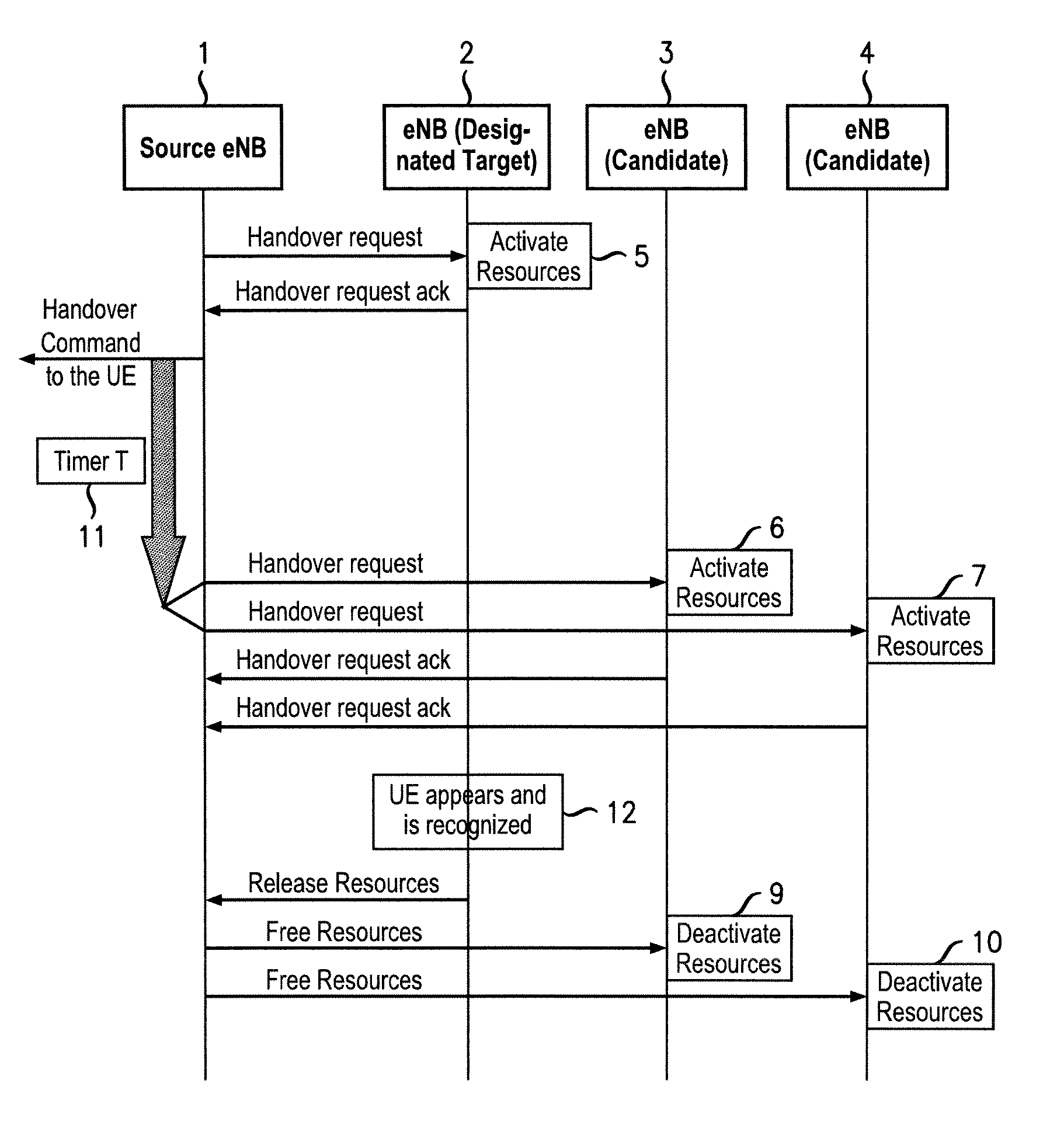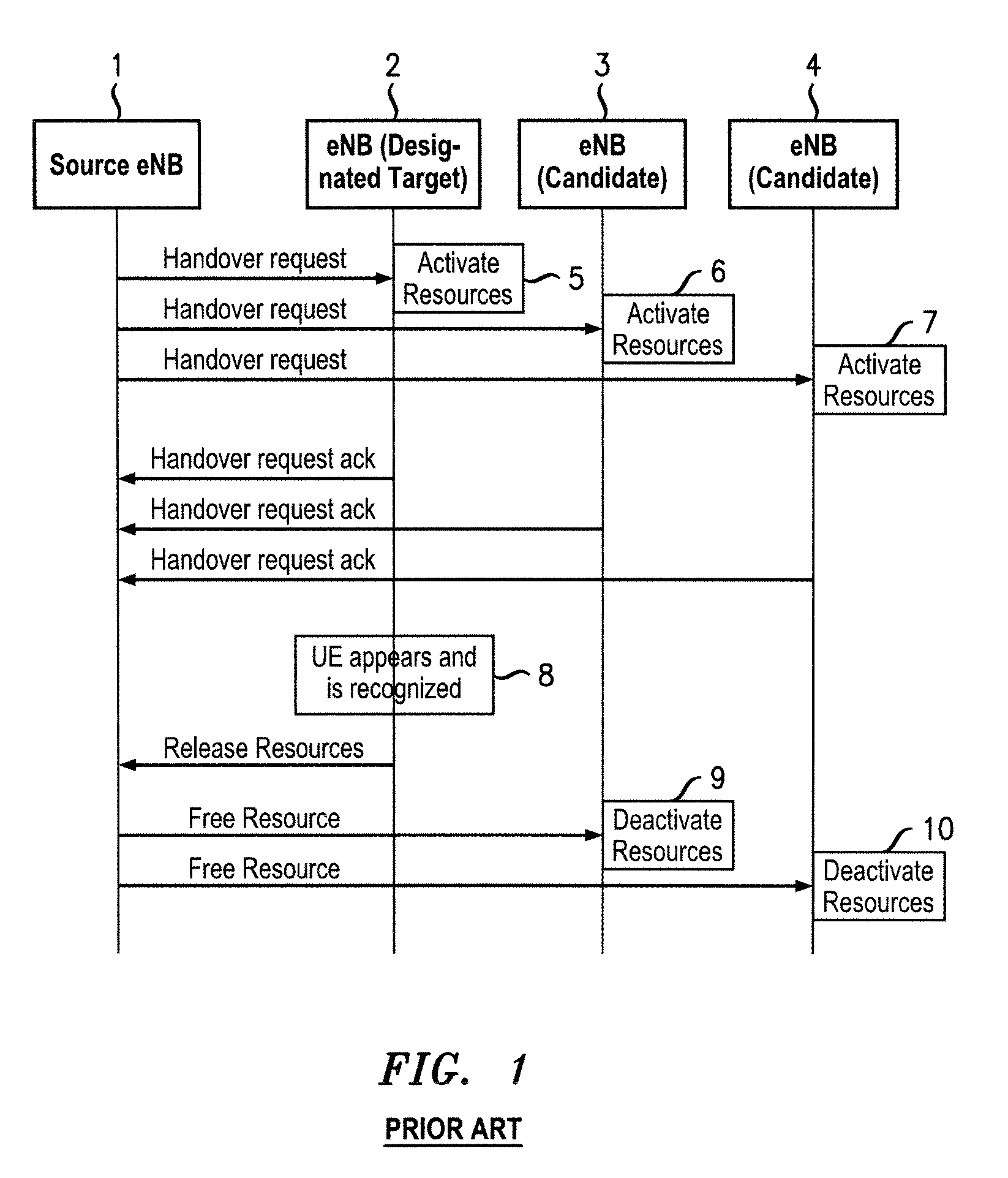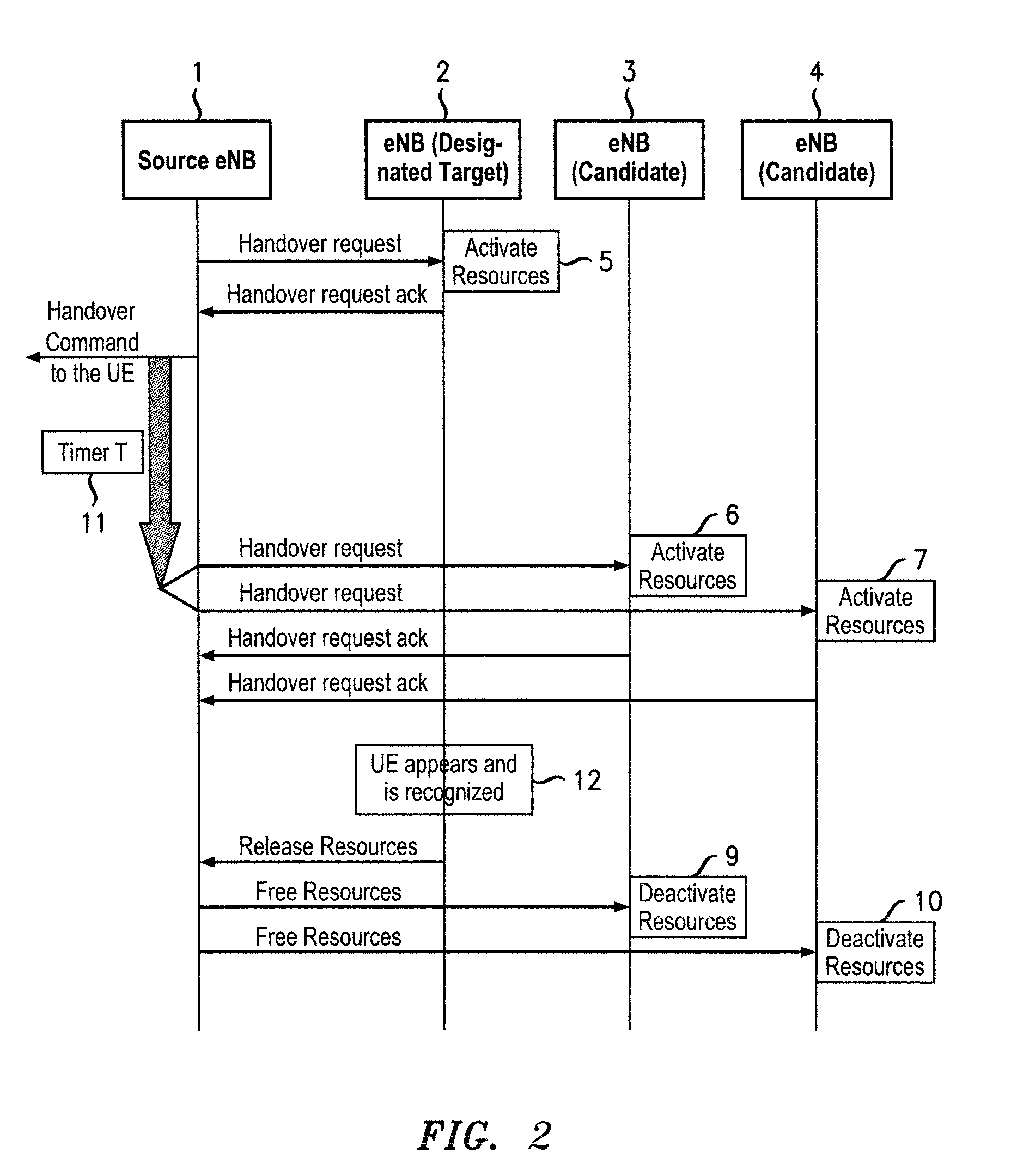Method and apparatus for radio link failure recovery in a wireless communications network
radio link technology, applied in the field of radio link failure recovery in a wireless communications network, can solve the problems of time-consuming procedure, radio link failure (rlf), and loss of connection between the ue and the source enb to which it is attached, so as to reduce the time required to recover a radio link connection, reduce overhead, and avoid associated messages
- Summary
- Abstract
- Description
- Claims
- Application Information
AI Technical Summary
Benefits of technology
Problems solved by technology
Method used
Image
Examples
Embodiment Construction
[0022]With reference toFIG. 2, in an LTE network, a UE (not shown) is connected to a source eNB 1. A Handover_Request message sent to a target eNB 2 and it reserves resources in response, shown at 5: “Activate Resources”. If the target eNB 2 is able to accept the UE, it sends a handover request acknowledgement message to the source eNB 1. The source eNB 1 then sends a Handover_Command to the UE and also triggers a timer T, as shown at 11, which in this arrangement is the timer T1 for RLF in LTE.
[0023]At the expiry of the timer T1, when the predetermined time period has expired, there has been no message sent from the target eNB 2 to the source eNB 1 to indicate that the UE has attached to it. Thus, the source eNB 1 then sends Handover_Request messages to other candidate eNBs 3 and 4. The candidate eNBs 3 and 4 reserve resources, shown at 6 and 7, and send a Handover_Request_Ack message back to the source eNB 1 if they are able to accept the UE. Thus, the Handover_Request message is ...
PUM
 Login to View More
Login to View More Abstract
Description
Claims
Application Information
 Login to View More
Login to View More - R&D
- Intellectual Property
- Life Sciences
- Materials
- Tech Scout
- Unparalleled Data Quality
- Higher Quality Content
- 60% Fewer Hallucinations
Browse by: Latest US Patents, China's latest patents, Technical Efficacy Thesaurus, Application Domain, Technology Topic, Popular Technical Reports.
© 2025 PatSnap. All rights reserved.Legal|Privacy policy|Modern Slavery Act Transparency Statement|Sitemap|About US| Contact US: help@patsnap.com



